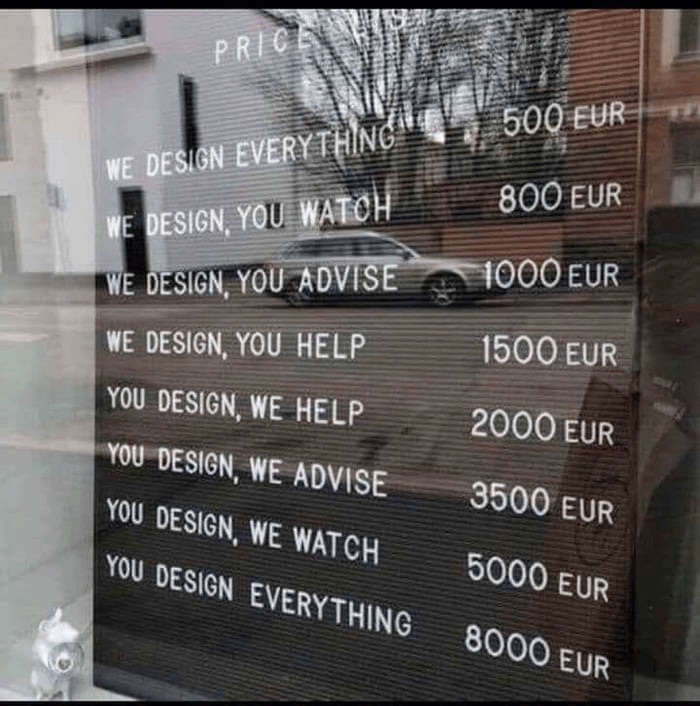Hiring a graphic designer? 5 ways to make your creative project a work of art

When you hire a graphic designer to build social media assets or engage an agency to rework your branding, it can feel like you’re putting your company’s identity in the hands of an outsider—and that’s a bit scary. But by combining the expertise of a creative industry professional with your unique business proposition, industry know-how, and brand story, this partnership has the potential to take your business to the next level.
Still, it’s not hard to hit a wall during a creative collaboration.
Often it’s a simple matter of something being out of sync. Designers live in a theoretical dimension of concepts, font, and color, and clients tend to not drift from their hyper-detailed brief. In short: when the balance of input and output tilts away from real collaboration, frustration ensues.
Here are ways to shift your team’s mindset to enhance your creative collaborations and ensure your project’s stunning success.
1. Lean into curiosity and discovery.
Bringing your initial research and concepts to the table is always helpful—it gives designers a sense of your aesthetic. If you’ve mood-boarded and remain open to surprise and leaving your comfort zone, you often find surprising designs that capture ideas you’ve struggled to put into words. When CKP worked with a local music venue, their openness and flexibility led us to create a vibrant illustrated system—an option they hadn’t initially considered.
2. Be prepared to jettison your “must-haves.”
What to exclude in this process is as important as what to include. Writers talk about “killing your darlings”—letting go of the words and phrases that you’re attached to, that you’re hell-bent on shoehorning in, but which may not actually serve to tell your story. Keep your brand’s promise and story at the forefront of your mind and make that your north star over using your favorite shade of magenta.
3. Respond with one voice.
Whether your organization has two employees or 20,000, you have key personnel best suited to make creative and strategic decisions. That might include senior leadership, your marketing leads, and maybe even a selection of new hires who closely resemble your target market. Picking the right group to weigh in and the right person to distill their thoughts is key. When you consolidate early ideas on the front end and consolidate feedback throughout the process, your designers get clear directions, instead of confusion and contradiction. Plus, there’s less risk of back-and-forth design rounds that can trigger extra fees. The last thing your project manager wants is for the C-suite to load your new website site right before launch and ask for a different color palette.
4. Live with creative work for a bit.
Congrats on narrowing down your options. Before you make a snap decision—especially with work that will face the public for a while—sit with the designs. Print them out. Save them to your phone. Sketch the logo. Read the words out loud. This additional, small test of time offers extra peace of mind when creative decisions feel impersonal and overwhelming.
5. Speak candidly, expert to expert.
You are authorities in your area and we are in ours. A mutual appreciation of this fact forms a great foundation for informed, honest dialogue. We’re here to listen. When we ground our creative discussions in specifics—this red is too bright, this photo doesn’t capture our demographic—we can better access the expertise and background reasons behind aesthetic and strategic decisions. This brings out the sharpest insights from both sides.
More Blog Posts

Let’s be real—communication at work is kind of like a group chat. Some people over-share, some barely respond, and others...

Once upon a time, PR meant faxing a press release and hoping someone, somewhere, had paper in their machine. All...

Employee Appreciation Day, recognized on the first Friday in March, will be celebrated this year on March 7. It is...

1. The Power of Sustained Impression (Or: Stop Passing Out at First Dates) Let me tell you about a date...

